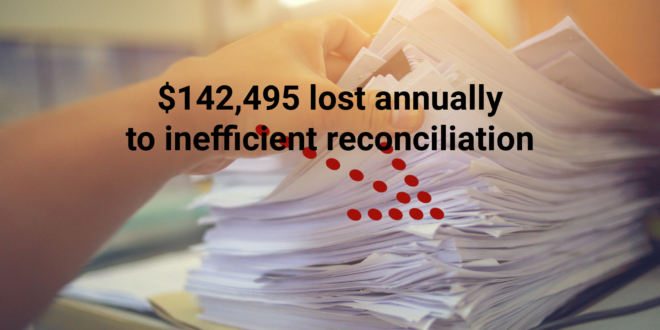By Bob Kaufman, CEO of Connexpay
Payment intermediaries play a crucial role in facilitating transactions between customers and third-party vendors – everyone from mom-and-pop travel agencies to major global ticket comparison sites has the same basic business model of acting as a ‘middleman’ between two parties.
This creates an extra layer of complexity compared to companies who simply take payments for products or services – with intermediary companies, payments come in, but a portion of those funds must also be sent as quickly as possible to one of potentially hundreds of third parties. These companies often encounter challenges when reconciling payments, leading to fragmented processes and significant headaches. Manual invoice filing, incomplete back-office data, and the need to merge multiple payment systems hinder accurate reconciliation.
With that said, I’ll explore the importance of integrated and comprehensive payment systems in overcoming these obstacles and the transformative impact they can have on businesses.
The cost of poor reconciliation

For businesses dealing with a high volume of transactions and B2B payments, the burden on finance teams is immense. Matching records, identifying discrepancies, and rectifying reconciliation gaps becomes time-consuming and error-prone. In the United States alone, financial service organizations are estimated to lose an average of $142,790 due to inefficient data reconciliation practices. Astonishingly, despite these losses, nearly one in five organizations still rely solely on manual data reconciliation, perpetuating the problem.
The problem extends beyond the bottom line: one study showed that 87% of accountancy professionals work overtime during the financial close process, with 60% saying that stress levels rose during that time and 25% reporting that this stress caused employees to leave their organization. 73% still operate a manual, spreadsheet-based system, and 84% prefer this process to take less time, freeing them to use their skills for strategic projects and analysis.
Another survey found only 20% of surveyed professionals were satisfied with their current processes, and only 28% trusted the accuracy of their data. This could mean immediate financial losses like fines from non-compliance with reporting and tax laws or inability to spot fraud. But it can also mean having limited oversight over your company’s finances. At a time when any individual can open an app on their phone and see their incoming and outgoing payments, it shouldn’t be acceptable that companies have to sort invoices and receipts by hand into spreadsheet columns.
The power of integrated payment systems

To address these challenges, many businesses have moved beyond relying on Excel spreadsheets, adopting advanced enterprise resource planning (ERP) systems such as Sage, SAP, and Oracle. While these systems offer valuable financial insights, they require integrated and comprehensive payment systems to unlock their full potential. This is where smarter solutions enter the picture.
What if there was a robust solution to streamline payment reconciliation, enabling finance managers, procurement leaders, and accounts teams to bid farewell to the tedious task of matching transactions from various suppliers, buyers, and systems? This technology already exists, and by centralizing incoming and outgoing transactions within a single platform, it eliminates the need for laborious manual efforts, saving valuable time, money, and in-house resources.
Automated reconciliation lies at the core of such a single platform, allowing for instant matching of transactions. This integration between payment processes and financial systems reduces the likelihood of errors and discrepancies. The result? Improved accuracy, increased efficiency, and enhanced cash flow.
Benefits of automated reconciliation
Here are just four benefits of the power of automated reconciliation:

- Actionable Data: By ensuring that finance teams have access to clean and accurate data, it empowers them to extract meaningful insights. With reliable information at their fingertips, CFOs, finance managers, and purchasing heads can make informed decisions and allocate resources effectively.
- Time and Cost Savings: With automated reconciliation, the labor-intensive task of manual data matching becomes a thing of the past. Businesses no longer need to allocate valuable resources to identify and rectify errors. Companies can focus on strategic growth initiatives by reducing operational costs and improving efficiency.
- Accelerated Expansion: A seamless reconciliation process expedites business expansion. By eliminating bottlenecks and streamlining payment operations, companies can scale their operations faster and with confidence. Reduced reconciliation time allows businesses to focus on nurturing customer relationships and exploring new opportunities.
- Reporting and Analytics: Robust reporting and analytics features enhance the speed and accuracy of the reconciliation process. Finance teams gain access to comprehensive insights and actionable data, enabling them to identify trends, optimize processes, and make informed financial decisions.
It’s about time businesses bid farewell to disjointed payment processes and embrace the power of integrated payment systems to drive their financial operations forward. With a comprehensive and intuitive platform, companies can experience seamless reconciliation, actionable data, significant time and cost savings, and accelerated expansion. By leveraging robust reporting and analytics features, finance teams can make informed decisions, optimize processes, and propel their organizations toward sustained success.
About the author

Bob Kaufman is the Founder and CEO of ConnexPay. Bob started ConnexPay with a passion for removing payment pain and friction and a clear purpose to improve the customer experience of paying and getting paid. His strategic foresight and visionary leadership have built ConnexPay into a company serving many businesses spanning several industries globally.
Before founding ConnexPay in 2017, Bob spent nearly 20 years at US Bank, where he served as CFO of the Payments Services division and Senior Vice President, leading innovation projects across the bank’s payments division. In addition, Bob also served as General Manager of US Bank’s Virtual Pay division, where he led product, marketing, and supplier enablement for all virtual payment solutions, as well as a sales team focused on virtual payments. Bob earned his bachelor’s degree in accounting from the University of Minnesota, and he holds a master’s degree in finance and strategic management from the University of Chicago GSB. Bob is a CPA and a CMA.
Recent PaymentsNEXT news:
Innovate or get left behind: What traditional banks can learn from the fintech revolution








LET’S CONNECT